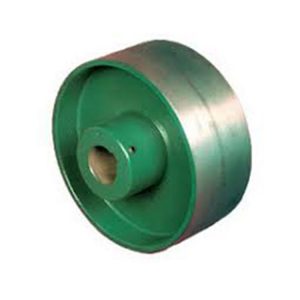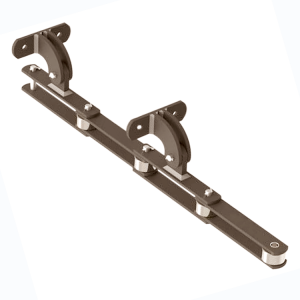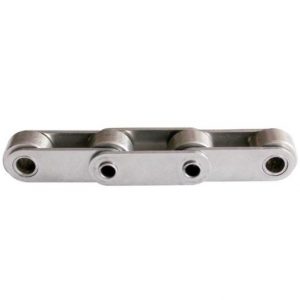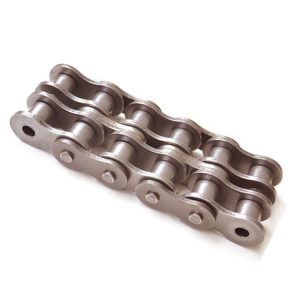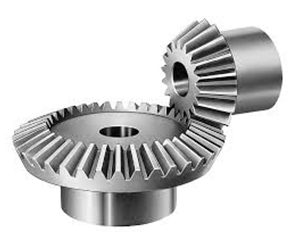Product Description
Product Title: Forklift gearbox transmission manual transmission forklift parts
Product Model: 14432-50001 Forklift gear
| Item | Description |
| Product Name | Forklift gear |
| P/N | 14432-50001 |
| Applied Model | Hehang |
| Net Weight (kg) | 168 |
| Gross Weight (kg) | 181 |
| Qty per Carton | 1 |
| Carton Size (cm) | 104*58*59 |
Forklift Mechanical Gearbox
The forklift gearbox transfers the output power of the forklift engine to the forklift driving axle through a mechanical transmission box. The function of the forklift mechanical gearbox is to change the torque and speed of the engine to meet the requirements of the driving and traction characteristics of the vehicle under various working conditions.
Classification Of Forklift Gearbox
1. According to power form: internal combustion power transmission, electric power transmission;
2. According to engine form: gasoline power transmission, diesel power transmission, liquefied gas power transmission;
3. According to the structure: mechanical transmission, hydraulic transmission, static pressure transmission.
| Material: | Aluminum Alloy |
|---|---|
| Surface Treatment: | Polishing |
| Customized: | Non-Customized |
| Standard: | Standard |
| Condition: | New |
| Feature: | Cost-Effective OEM Forklift Parts |
| Samples: |
US$ 534.9/Piece
1 Piece(Min.Order) | |
|---|
| Customization: |
Available
| Customized Request |
|---|
Steps to Replace a Faulty Gearbox in an Automobile
Replacing a faulty gearbox in an automobile is a complex task that requires proper tools, skills, and safety precautions. Here are the general steps involved in the process:
- Prepare the Vehicle: Park the vehicle on a flat surface and engage the parking brake. Disconnect the battery to ensure safety during the procedure.
- Drain Fluids: Drain the transmission fluid from the old gearbox into a suitable container.
- Disconnect Components: Remove any components obstructing access to the gearbox, such as the driveshaft, exhaust system, and linkage.
- Suspend the Engine: If necessary, use an engine hoist or support to suspend the engine safely.
- Support the Gearbox: Use a transmission jack to support the weight of the gearbox.
- Remove Gearbox: Detach the gearbox from the engine by removing bolts and disconnecting the clutch or torque converter.
- Install New Gearbox: Position the new gearbox onto the engine and secure it in place with bolts.
- Reconnect Components: Reattach the driveshaft, exhaust system, and linkage that were disconnected earlier.
- Refill Fluids: Fill the new gearbox with the appropriate transmission fluid according to the manufacturer’s specifications.
- Lower Engine: Carefully lower the engine back into its original position if it was suspended.
- Test and Adjust: Start the vehicle and test the new gearbox for proper operation. Check for any leaks, unusual noises, or gear shifting issues.
- Final Check: Double-check all connections and ensure that all components are properly secured.
- Dispose of Old Fluid: Dispose of the old transmission fluid safely and responsibly.
- Dispose of Old Gearbox: Properly dispose of the old gearbox according to local regulations.
It’s important to note that gearbox replacement can vary significantly depending on the vehicle’s make and model. It’s recommended to consult the vehicle’s service manual or seek professional assistance if you’re not experienced in automotive repair.
editor by CX 2023-12-12
China wholesaler OEM Gray Iron Big Pulley Machining Used on Farm Machinery idler pulley
Product Description
Part Weight: 1.6-80.8kg
Material:Gray Iron, HT200,HT25,HT300,HT350 GG14,GG20,GG25,GG30
EN-GJS-150, EN-GJS-200, EN-GJS-250, EN-GJS-300
ASTM A48 class 25, class 30, class 40, class 50, class 60
Ductile Iron(Nodular Iron):
QT400, QT450, QT500, QT600, GGG40, GGG50, GGG60
60-40-18, 65-45-12, 70-50-01, 80-60-03
Alloy Steel:1571, 1045, 4140, WCB, LCB
Stainless Steel:SS304, SS304L, SS316, SS316L, CF8M, CF-8,
Description: belt wheel
Production Process: casting and CNC precision machining
Casting Tolerance: CT4-CT6, CT9-CT11
Machining Tolerance: IT4-IT12
Agriculture machinery, grey iron
Different kinds of Bearings, Auto Parts, Farm Replacement Parts
Such as replacement part for John Deere , Case-IH equipment, MacDON Cutting Platforms,
Kinze Planters, Great Plains, AGCO Cornheader, Sunflower, BHC Parisol, DMI Coulters,
KMC Kelley Peanut & Tillage Landoll, Orthman Cultivators & Krause Parts, Bingham/Tye Paratill, Yetter Coulters, W & A Hipper Prime Levee Plow etc
| Description: | Belt wheel |
| Application: | Farm machinery |
| Material: | Sainless steel 304/Cast iron GG25/GG30/Alumium ADC-12 |
| Drawing format accept: | Pdf, Jpg, CAD, IGS, STP,Pro-E |
| MOULD TOOLING | MADE BY CNC machine |
| Casting Process: | Investment casting/Sand casting/ die casting |
| Mainly Machining Process: | By milling and CNC milling |
| Lead time for sample: | 25-30days |
| Delivery time for normal order: | 30days |
| Payment terms: | T/T, L/C or negotiate |
| Delivery port departure | HangZhou , ZheJiang PORT |
| After-sales Service: | 1 Year |
|---|---|
| Warranty: | 1 Year |
| Condition: | New |
| Certification: | ISO9001 |
| Standard: | GB |
| Customized: | Customized |
| Customization: |
Available
| Customized Request |
|---|
How does the diameter of a pulley affect its mechanical advantage?
The diameter of a pulley plays a significant role in determining its mechanical advantage. Mechanical advantage refers to the ratio of the output force or load to the input force or effort applied to the pulley system. Here’s how the diameter of a pulley affects its mechanical advantage:
1. Larger Diameter: When the diameter of a pulley increases, the mechanical advantage also increases. A larger diameter means that the circumference of the pulley is greater, allowing a longer length of rope or belt to be wrapped around it. As a result, a larger pulley requires less effort force to lift a given load. This is because the load is distributed over a greater length of rope or belt, reducing the force required to overcome the load.
2. Smaller Diameter: Conversely, when the diameter of a pulley decreases, the mechanical advantage decreases. A smaller diameter means that the circumference of the pulley is reduced, resulting in a shorter length of rope or belt wrapped around it. As a result, a smaller pulley requires more effort force to lift a given load. This is because the load is concentrated over a shorter length of rope or belt, requiring a greater force to overcome the load.
It’s important to note that while a larger diameter pulley offers a greater mechanical advantage in terms of reducing the effort force required, it also results in a slower speed of the load being lifted. This is because the longer length of rope or belt requires more input distance to achieve a given output distance. On the other hand, a smaller diameter pulley offers a lower mechanical advantage but allows for a faster speed of the load being lifted.
The mechanical advantage of a pulley system can be calculated using the formula:
Mechanical Advantage = Load / Effort
Where “Load” refers to the weight or force being lifted and “Effort” refers to the force applied to the pulley system. By adjusting the diameter of the pulley, the mechanical advantage can be optimized to suit the specific requirements of the application, balancing the effort force and speed of the load being lifted.
How are pulleys used in manufacturing processes and assembly lines?
Pulleys play a crucial role in manufacturing processes and assembly lines, facilitating the movement of materials, components, and products. They are utilized in various ways to enhance efficiency, increase productivity, and streamline production. Here’s how pulleys are commonly used in manufacturing processes and assembly lines:
1. Conveyor Systems:
Pulleys are extensively employed in conveyor systems, which are integral to manufacturing and assembly lines. Conveyor belts or chains run over pulleys at different points along the line, transporting materials or products from one workstation to another. The pulleys help guide and support the conveyor belts or chains, ensuring smooth and controlled movement. By utilizing pulleys of different sizes or configurations, conveyor systems can be designed to accommodate various layouts, inclines, or speed requirements.
2. Material Handling:
Pulleys are used to facilitate the lifting, lowering, and movement of materials in manufacturing processes. Cranes, hoists, and lifting equipment often incorporate pulley systems to provide mechanical advantage and precise control over heavy loads. The pulleys, along with ropes, cables, or chains, allow operators to lift and position materials with minimal effort and improved safety.
3. Assembly Line Automation:
In automated manufacturing and assembly lines, pulleys are utilized in robotic systems to control the movement of robotic arms. The pulleys are incorporated into the mechanism that guides the cables or belts connected to the robotic arms. By adjusting the position and tension of the pulleys, precise and coordinated movements can be achieved, enabling efficient assembly processes.
4. Tensioning and Alignment:
Pulleys are crucial for maintaining proper tension and alignment in manufacturing processes. Tensioning pulleys are used to apply the appropriate tension to belts or chains, ensuring optimal power transmission and preventing slack or slipping. Alignment pulleys are employed to align belts or chains, minimizing wear, reducing vibrations, and prolonging the life of the components.
5. Power Transmission:
Pulleys are central to power transmission in manufacturing processes and assembly lines. They are used in conjunction with belts, chains, or gears to transfer rotational motion and power from one component to another. By selecting pulleys of different sizes or ratios, the speed and torque can be adjusted to suit specific production requirements.
6. Tool and Machine Positioning:
In manufacturing processes, pulleys are often integrated into tool positioning systems or adjustable machine setups. By using pulleys and cables, tools or machine components can be easily repositioned, allowing for quick changeovers or adjustments to accommodate different workpieces or production tasks.
Overall, pulleys are indispensable in manufacturing processes and assembly lines, enabling efficient material handling, precise movement control, proper tensioning and alignment, power transmission, and flexible tool positioning. Their use contributes to increased productivity, improved workflow, and enhanced automation in the manufacturing industry.
What are the advantages of using pulleys for mechanical advantage?
Using pulleys for mechanical advantage offers several advantages in various applications. Here are the key advantages:
1. Increased Lifting Capacity: One of the primary advantages of using pulleys for mechanical advantage is that they allow for the lifting of heavier loads with less effort. By distributing the load over multiple segments of rope or belt, pulleys reduce the amount of force required to lift the load. This is especially beneficial in scenarios where manual lifting or limited power is involved.
2. Easier Load Manipulation: Pulleys make it easier to manipulate and control heavy loads. The mechanical advantage provided by pulleys reduces the force needed to move or lift the load, allowing operators to exert less effort. This makes tasks such as lifting, lowering, and positioning heavy objects more manageable and less physically demanding.
3. Safety and Injury Prevention: By reducing the amount of force required to lift heavy loads, pulleys contribute to improved safety and injury prevention. When operators have to exert less physical effort, the risk of strains, sprains, and other lifting-related injuries is significantly reduced. Pulleys enable controlled and smoother load movement, minimizing the risk of sudden shifts or drops that could cause accidents.
4. Precise Load Positioning: Pulley systems provide precise control over load positioning. By using multiple pulleys and adjusting the tension in the rope or belt, operators can achieve precise vertical and horizontal movements of the load. This level of control is particularly valuable in applications that require accurate placement of heavy objects, such as construction, manufacturing, and material handling.
5. Versatility and Adaptability: Pulleys offer versatility and adaptability in various applications. They can be configured in different arrangements and combinations to achieve specific mechanical advantages based on the requirements of the task or load. Pulleys can be easily integrated into existing systems or incorporated into custom-designed setups, making them highly adaptable to different situations.
6. Efficient Power Transmission: Pulleys provide efficient power transmission in mechanical systems. They enable the transfer of rotational motion and force from one component to another with minimal energy loss. The use of pulleys allows for the optimization of power transmission, ensuring effective utilization of available power sources.
7. Cost-Effectiveness: Using pulleys for mechanical advantage can be cost-effective compared to alternative methods. Pulleys are relatively simple and economical devices that can be readily obtained. They require minimal maintenance and have a long operational lifespan. Additionally, pulley systems can often be designed and implemented without the need for complex and expensive equipment.
In conclusion, using pulleys for mechanical advantage offers advantages such as increased lifting capacity, easier load manipulation, safety and injury prevention, precise load positioning, versatility, efficient power transmission, and cost-effectiveness. These advantages make pulleys a valuable tool in a wide range of industries and applications.
editor by CX
2023-12-12
China manufacturer Crankshaft Belt Pulley for BMW E46 E61 E81 double pulley
Product Description
Product Description
Detailed description of Crankshaft belt pulley for BMW E46 E61 E81
1)OE NO.: 11237787304,11237790921,11237793882,11237801977
2)Material:Steel
3)Color:Black
4)Certificate:ROHS,SAE,ISO,DOT,SGS,ECE/ADR Approved
5)Application:Used for E46 E61 E81
6)Good quality with reasonable price and fast delivery
7)Payment:T/T,Paypal or Western Union;
30% advance by T/T before producing and 70% balance by T/T before shipment.
8)Delivery time: 3-5 days for sample order or small order;10-15 days after receiving deposit for big order.
9)Package: Neutral packing.
10)MOQ: 100pcs
Packaging & Shipping
1. Packing:Neutral packing or meet customer’s demand
2. Lead time: 3-5 days for sample order; 10-15 days for formal order
3. Shipping freight are delivered under your requests
4. Export sea port: HangZhou,China
5. Discounts are offered based on order quantities
6. Shipping: By Express (EMS, DHL, FedEx,UPS, TNT), By Air or By sea
Our Services
1)12 months warranty
2)Samples can be supplied
3)We can reply your inquiry within 24 hours
4)Very good after-sale service
Company Information
We are a professional supplier of car led lights,bus led lamps,trailer led lamps,semi trailer led lamps,truck led lamps,engineering & construction machine led lamps,forklift led lights for years in China.
If you are interested in our products, please feel free to contact with us at any time.
Our products are exported to North America,Australia,Middle East,Africa,Southeast of Asia,South America and Europe.
We are positive to enlarge our markets in other countries.
FAQ
Q1. How many years have your company deal in autoparts?
A: Our production team has more than 10 years of experience in this industry.
Q2. What is your company major products?
A: Our main products are car parts,truck parts and trailer parts.
Q3. Are you a factory or trading company?
A: We are a trading company but we have many joint venture factories.
Q4. What are your guaranty ?
A: 12 months warranty
Q5. Is your company willing to be glad if I am your agent ?
A: Yes,very glad if you can be our our agent in your market.
Q6. What would you do if your product quality is out of the question
A: We will take full responsibility for any discrepancy and defection on our goods.
| Application: | Used for BMW E46 E61 E81 |
|---|---|
| Certification: | CE, RoHS, ISO |
| Warranty: | 12 Months |
| Material: | Metal |
| Condition: | Brand New |
| Weight: | 3kg |
| Samples: |
US$ 20/Piece
1 Piece(Min.Order) | |
|---|
| Customization: |
Available
| Customized Request |
|---|
How do multiple pulleys in a block and tackle system work together?
In a block and tackle system, multiple pulleys are used in combination to create a mechanical advantage, allowing for easier lifting of heavy loads. The pulleys in a block and tackle system work together in the following manner:
1. Load Distribution: The weight of the load to be lifted is distributed over multiple strands of rope or cable that pass through the pulleys. This distribution of weight helps in reducing the force required to lift the load.
2. Mechanical Advantage: The mechanical advantage in a block and tackle system is achieved by increasing the number of rope segments that support the load. Each additional pulley increases the number of rope segments, which in turn reduces the amount of force needed to lift the load. The mechanical advantage is equal to the number of segments of rope supporting the load.
3. Tension Distribution: As the load is lifted, the tension in the rope or cable changes. In a block and tackle system, the tension is distributed among the various segments of rope or cable connected to the pulleys. This distribution of tension ensures that the load is lifted evenly and prevents excessive stress on any single rope segment.
4. Rope Arrangement: The pulleys in a block and tackle system are arranged in two sets: the fixed pulleys and the movable pulleys. The fixed pulleys are attached to a fixed point, such as a beam or a ceiling, and do not move. The movable pulleys are attached to the load being lifted and can move freely. The arrangement of the pulleys determines the mechanical advantage and the direction of force required to lift the load.
By combining these principles, multiple pulleys in a block and tackle system allow for the effective lifting of heavy loads with reduced effort. The mechanical advantage provided by the pulleys makes it possible to lift loads that would otherwise be too heavy to lift manually. Block and tackle systems are commonly used in various applications, including construction, rigging, sailing, and theatrical setups.
What role do pulleys play in modern elevators and hoists?
Pulleys play a crucial role in modern elevators and hoists, enabling the smooth and efficient vertical movement of loads. They are integral components of the lifting mechanisms, providing mechanical advantage and facilitating safe and controlled operation. Here’s how pulleys are used in modern elevators and hoists:
1. Lifting Mechanism: In elevators and hoists, pulleys are part of the lifting mechanism that moves the load vertically. They are typically combined with cables, ropes, or belts to create a pulley system. By distributing the load’s weight across multiple lines and changing the direction of the applied force, pulleys make it easier to lift heavy loads. The number and arrangement of pulleys can vary depending on the specific design and requirements of the elevator or hoist.
2. Counterweight Systems: Modern elevators often utilize counterweight systems to offset the weight of the elevator car and reduce the amount of power required for operation. Pulleys play a crucial role in these systems by guiding the cables connected to the counterweight. As the elevator car moves up or down, the counterweight moves in the opposite direction, balancing the load. The pulleys in the counterweight system help distribute the weight and ensure smooth movement.
3. Traction Control: Pulleys are also involved in the traction control mechanism of elevators and hoists. Traction elevators use ropes or belts that pass over a series of pulleys, known as sheaves, to create traction. An electric motor drives the sheaves, causing the ropes or belts to move. By adjusting the rotational movement of the sheaves, the speed and direction of the elevator or hoist can be controlled. The pulleys in the traction control system enable precise and reliable operation.
4. Safety Systems: Pulleys play a crucial role in the safety systems of elevators and hoists. For example, in traction elevator systems, overspeed governors utilize pulleys to detect excessive speed and activate the safety brakes in case of a malfunction. The pulleys in these safety systems help monitor and control the elevator’s speed, ensuring passenger safety.
5. Maintenance and Service: Pulleys in modern elevators and hoists are designed to be durable and require minimal maintenance. They are often equipped with sealed bearings or other lubrication systems to reduce friction and wear. This ensures the longevity and reliability of the pulley systems, minimizing downtime and maintenance costs.
Overall, pulleys are essential components in modern elevators and hoists, enabling vertical movement, providing mechanical advantage, ensuring safety, and facilitating efficient operation. They contribute to the smooth and controlled lifting of loads, making elevators and hoists reliable and indispensable tools in various industries and buildings.
What is a pulley, and how does it function in mechanical systems?
A pulley is a simple machine consisting of a grooved wheel and a rope, cable, or belt that runs along the groove. It is used to transmit force and motion in mechanical systems. Here’s a detailed explanation of how a pulley functions:
1. Mechanical Advantage: The primary function of a pulley is to provide mechanical advantage. By changing the direction of the force applied and distributing it over multiple segments of the rope or belt, a pulley system allows for easier lifting or moving of heavy loads. The mechanical advantage gained depends on the number of pulleys used in the system.
2. Force Transmission: When a force is applied to one end of the rope or belt, it creates tension that causes the pulley to rotate. As the pulley turns, the force is transmitted to the load attached to the other end of the rope or belt. This force transmission allows for the movement and manipulation of objects in mechanical systems.
3. Directional Change: One of the key functions of a pulley is to change the direction of the applied force. By redirecting the force along a different path, a pulley system enables the operator to exert force from a more convenient or advantageous position. This directional change is particularly useful in situations where the force needs to be applied vertically, horizontally, or at an angle.
4. Speed and Torque Conversion: In addition to changing the direction of force, pulleys can also be used to convert speed and torque in mechanical systems. By varying the size of the pulleys or using pulleys of different diameters, the rotational speed and torque can be adjusted according to the requirements of the system. This speed and torque conversion allows for the optimization of power transmission and the matching of different rotational speeds between input and output components.
5. Multiple Pulley Systems: Pulleys can be combined in systems to achieve increased mechanical advantage or to create complex motion patterns. In systems with multiple pulleys, such as block and tackle arrangements, the load is distributed over several segments of rope or belt, further reducing the effort required to lift heavy objects. These systems are often used in cranes, elevators, and other applications where heavy lifting is necessary.
6. Fixed and Movable Pulleys: Pulleys can be categorized as fixed or movable. A fixed pulley is attached to a stationary structure, and its main function is to change the direction of force. A movable pulley, on the other hand, is attached to the load being moved and moves with it. Movable pulleys provide mechanical advantage by reducing the effort required to lift the load.
7. Belt and Rope Pulleys: Pulleys can have different designs depending on the application. Belt pulleys typically have a grooved surface to grip and guide belts, while rope pulleys have a smooth surface to minimize friction and prevent rope wear. The choice between belt and rope pulleys depends on factors such as load requirements, operational environment, and desired efficiency.
Overall, a pulley is a versatile mechanical device that functions as a force multiplier, directional changer, and speed/torque converter in mechanical systems. Its ability to provide mechanical advantage, change force direction, and facilitate complex motion patterns makes it an essential component in various applications, including lifting, transportation, and power transmission.
editor by CX
2023-12-12
















